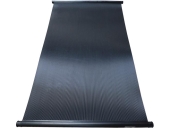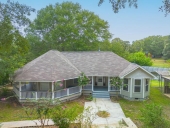
 4
4




Changing one thing, no matter how tiny, is still change




John Daley Bendigo, Australia The Enemy of progress is the hope of a perfect plan
Benefits of rainfall collection https://permies.com/t/88043/benefits-rainfall-collection
GOOD DEBT/ BAD DEBT https://permies.com/t/179218/mortgages-good-debt-bad-debt
 3
3






Iterations are fine, we don't have to be perfect
My 2nd Location:Florida HardinessZone:10 AHS:10 GDD:8500 Rainfall:2in/mth winter, 8in/mth summer, Soil:Sand pH8 Flat







John C Daley wrote:MY ANSWERS IN CAPITALS
My query relates directly to the water pump, pressure, non return valves, gravity etc.
Given that the cisterna is 2 m deep, the ground floor is 2.4m high, as is the top storey, how many one way valves do I need and where do I put them?
HJAVE YOU THOUGHT ABOUT A SUBMERSIBLE PUMP IN THE CISTERN WITH ONE NON RETURN VALVE AT THE PUMP? I have the Sterwin pump already and my questions were related directly to where to situate one way valves and check valves in that scenario.
I have attached a drawing - very rough- of where I plan to put the water lines and the layout of the various basins etc. The kitchen and bathroom are back to back in both flats so there is only 1 water line on each level connecting all the water points.
I WOULD RUN A LOOP FROM THE PUMP TO THE UPSTAIRS FLAT AND BACK DOWN TO THE LOWER FLAT SO THE PRESSURE DROP IS REDUCED OVER THE WHOLE SYSTEM. As the pump is on the ground floor roof, I am thinking of a T joint coming out the pump.
I'm not convinced that the upstairs gas boiler is the best option for providing hot water downstairs. WHY NOT? By the time the heated water reaches the downstairs shower I will have wasted at least 5L of cold water. Also each time I use the hot water tap I will be heating at least 5L of water which will cool in the pipes once I have switched off the water-that's quite a waste of gas. As I have plenty wood in winter and sun in summer, I'd rther use those energy sources as much as possible.
I am hoping to put some form of masonry wood stove downstairs with a copper coil [I HAVE USED 1/2 COPPER PIPE, BYT 3/4 MAY BE BETTER ]
around the stove pipe feeding a thermosyphon tank affixed to the wall above the sink in the kitchen which could gravity feed the shower and basins in the winter, and switchover to using the sun to heat the water in the tank in our swelteringly hot summers when you can't use a woodstove indoors.
But I don't think I can pull off a pressurised thermosyphon unit. NO THEY DO NOT WORK So I can't use and old electric water heater/storage tank? I am trying to come up with a system that will switch between a solar collector and the copper coil by closing and opening relevant valves. And the system will have to be fed from the pump so my hot water would not be gravity fed either.
Can thermosyphon work with a non-pressurised tank? THAT IS HOW THEY WORK Can you expand on the design?
This is a secondary concern though, my main aim is to get cold water from the cisterna to the upstairs flat, supply the upstairs with hot and cold running water and downstairs with cold water. I'm still happy to boil a kettle to wash dishes and shower with my 12V boat pump dumped in a bucket of warm water!
Changing one thing, no matter how tiny, is still change




"When the whole world is running towards a cliff, he who is running in the opposite direction appears to have lost his mind." C.S. Lewis
Visit https://themaineingredient.com for organic, premium dried culinary herbs that are grown, processed, and packaged in the USA.



 3
3




Changing one thing, no matter how tiny, is still change
 3
3







 3
3




Changing one thing, no matter how tiny, is still change

|
I see you eyeballing the tiny ad's pie
The new permaculture playing cards kickstarter is now live!
https://www.kickstarter.com/projects/paulwheaton/garden-cards
|






